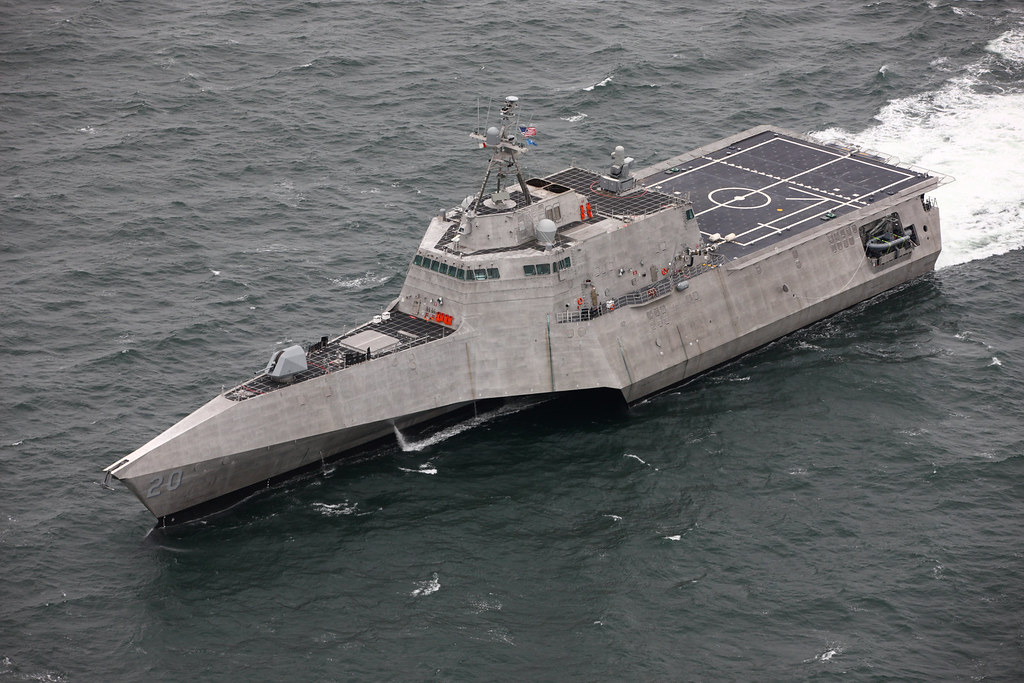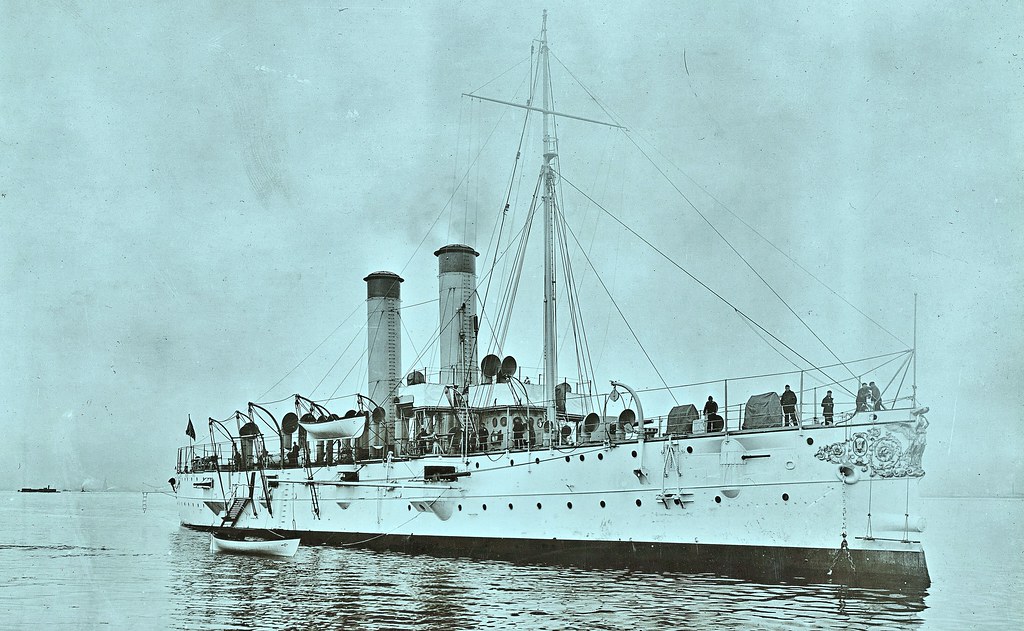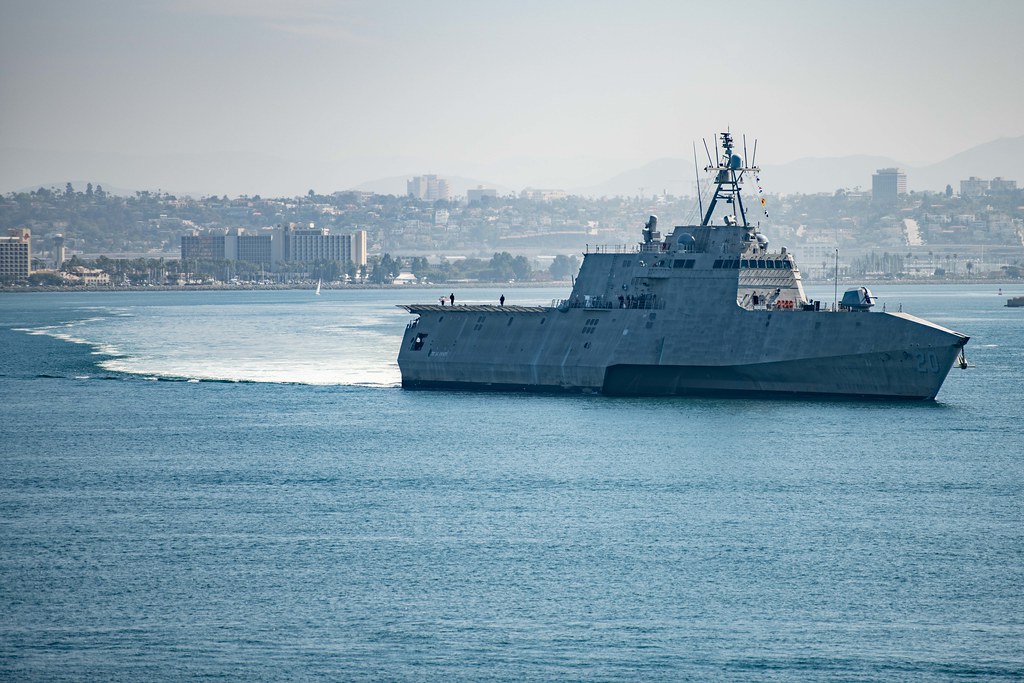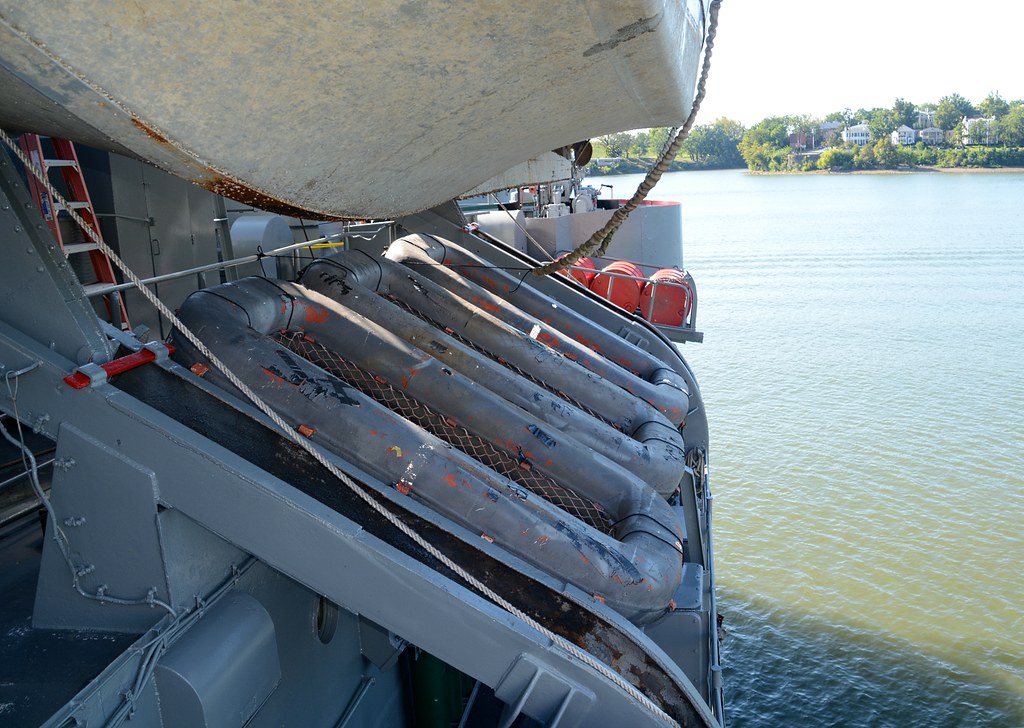
Change is a constant in the fluid dynamic of naval operations, and nowhere is this more evident than in the recent change of command of the USS Cincinnati (LCS 20). At a ceremony on May 9 at the Austal USA waterfront ship repair facility, Cmdr. Robert Burke handed over the reigns of the Independence-variant littoral combat ship to Cmdr. Matthew Knuth.
Capt. Douglas Meagher, commodore, Littoral Combat Ship Squadron One (LCSRON 1), presided over the event, which not only marked a change in leadership but also served as a retirement ceremony for Cmdr. Burke, celebrating his 23 years of faithful service. His tenure was notable for significant accomplishments, including training 11 deploying crews, initiating a successful crew fatigue study, and facilitating a range of training events that lead to the development and testing of the next-generation Mine Warfare Mission Package.

Capt. Meagher extolled Burke’s command capabilities, stating, “Rob mastered the most difficult command afloat position across our squadron. He facilitated training and certification for nearly every deployed littoral combat ship crew.” Burke’s achievements were recognized with the Meritorious Service Medal, a testament to his superior accomplishments.
In his parting words, Burke expressed his deep connection to his career and the sea, “The challenges faced, the missions executed, and the camaraderie shared as crews have been nothing short of remarkable.” His final remarks highlighted his excitement for the ship’s future, underlining that any potential adversary should dread the USS Cincinnati’s path.

The USS Cincinnati is part of a new breed of surface combatants, designed to operate in near-shore and open-ocean environments. It is a ship tailored for 21st-century threats, characterized by speed, optimal manning, and mission-specific flexibility. The vessel integrates with joint, combined, manned, and unmanned teams, underpinning forward-presence, maritime security, sea control, and deterrence missions around the globe.
Cmdr. Knuth, who takes over from Burke, steps into a role of considerable responsibility and potential. He inherits a ship and a legacy that is critical to the projection of power in littoral zones — areas where the sea meets the land and where naval presence can be most decisive.

The littoral combat ship program, of which the USS Cincinnati is a part, exemplifies the U.S. Navy’s commitment to innovation and adaptability. The LCS is built around a modular design philosophy, enabling it to quickly swap out mission packages and adapt to different warfare requirements, ranging from anti-submarine and mine countermeasures to surface warfare.
The commissioning ceremony for the USS Cincinnati back in October 5, in Gulfport, Miss., was a momentous occasion, attended by more than 1,400 guests and dignitaries, including U.S. Rep. Brad Wenstrup of Ohio, who described the ship as a “marvel of engineering.” Principle speaker at the event, Wenstrup praised the vessel’s versatility and advanced capabilities, saying, “The USS Cincinnati will extend the maneuverability and lethality of our fleet to confront the many challenges of our complex world.”

As the LCS 20 embarks on its missions with a new commanding officer, the USS Cincinnati represents the Navy’s evolving strategy to meet modern threats with agile, versatile, and powerful solutions. The ship and its crew, with their motto of “strength and unity,” are poised to secure America’s interests at sea and provide a signal to allies and a deterrent to adversaries.
The implications of such changes and advancements are not lost on military tech and politics enthusiasts who understand the intersection of military capability and geopolitical strategy. As the USS Cincinnati sails forward, it carries not just the might of its crew and technology, but also the ever-evolving narrative of naval warfare and the defense policies shaping our world.
Relevant articles:
– USS Cincinnati (LCS 20) Conducts Change of Command, DVIDS
– Commander Robert Burke, Commanding Officer USS Cincinnati LCS20, cincinnatirotary.org
– Navy Commissions USS Cincinnati (LCS 20), Defense aerospace

